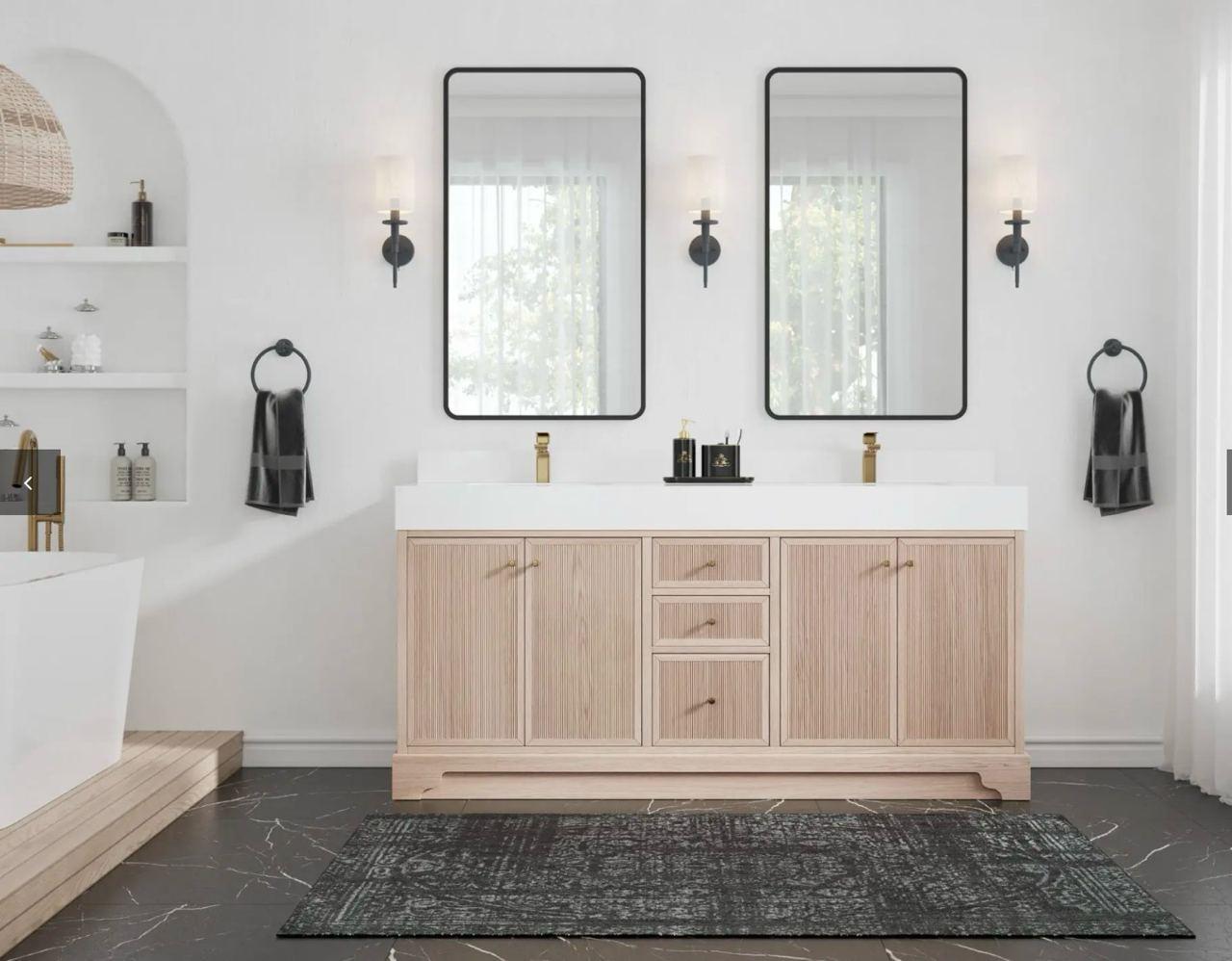Choosing a bathroom vanity isn’t just about finding something that fits the wall. It’s about how it works, how it lasts, and how it makes the space feel every single day. A vanity is one of the most used fixtures in the bathroom. If you get it wrong, you’ll notice every time you reach for a drawer that sticks, or when moisture starts to swell the edges. But if you get it right? You’ll stop thinking about it—because it simply works, day in and day out.
Let’s talk about why material and design aren’t just cosmetic—they shape the long-term value of your investment.
Design Drives Function
A good vanity should feel effortless. Drawers that slide smoothly, doors that open without bumping into other fixtures, and enough counter space for what you use daily—all of that matters. Clean, minimal design isn’t just a style choice; it makes the piece more usable.
When a vanity is designed with intention, it won’t dominate the room, even if it’s large. It supports the flow of the space. And when it comes to bathrooms, where space is often limited, good design can help a small room feel more open and functional.
Small details like reeded cabinet fronts or integrated handles also help define the look. These aren’t just decoration—they offer grip, texture, and a tactile experience that cheap MDF pieces can’t fake.
Storage That Makes Sense
You know what’s frustrating? Shallow drawers that don’t hold full-size bottles, or deep cabinets with no internal shelves—basically, wasted space. The right vanity has a mix of storage that actually suits real life. That means drawer depth for upright items, smaller compartments for everyday essentials, and doors that give access to the plumbing without making the entire cabinet a mess.
People don’t want to work hard to keep their bathrooms organized. The vanity should do some of that work for them.
Vanities with multiple drawers and dedicated spaces help cut down on clutter. It’s not about having more—it’s about using what you have better.
Material Matters More Than You Think
The bathroom is one of the toughest environments in the house. Steam, heat, humidity—it’s constant. That’s why the material you choose for your vanity is critical.
Solid teak is one of the best options out there. It’s naturally resistant to water, which means it doesn’t swell, split, or get moldy like other woods. That moisture resistance isn’t just surface-deep—it’s built into the wood’s grain. That means less maintenance, better durability, and a longer life.
Teak also has a strength that composite woods and veneers can’t match. It holds together over time. You won’t find your drawer fronts warping or screws pulling out after a few seasons of heavy use.
If you’re designing for longevity—not just looks—solid wood, especially teak, is hard to beat.
Style That Doesn’t Chase Trends
Bathrooms aren’t like fashion—they don’t get updated every season. A vanity needs to look good now and ten years from now. That’s where timeless design comes in.
Clean edges, warm tones, and natural textures have staying power. A vanity that leans into simplicity—rather than trendy shapes or bold finishes—has a better chance of still feeling current in a few years. The Sonoma Teak Vanity is a good example of this balance. Its reeded wood detailing adds depth without overwhelming the room, while the brass knobs bring subtle elegance instead of flashy hardware that might date quickly.
If you're furnishing a shared or master bathroom and need more space, a double sink vanity offers more than just added function—it helps define the room as a shared space without sacrificing individual storage.
The Little Details That Change the Experience
Soft-close drawers. Solid brass hardware. Smooth cabinet interiors. These don’t just sound nice—they matter in use. Every time you pull a drawer, open a door, or wipe down the counter, you feel the difference between good and average craftsmanship.
Design isn't just what it looks like—it's how it feels. It’s the way the drawers close quietly. The way the knobs stay cool to the touch. The way the wood grain adds warmth to a white tile wall. These details affect how the vanity fits into your daily routine.
A piece that’s built with care saves time, holds up better, and simply feels better to use.
Conclusion: It’s Worth Getting Right
The bathroom vanity isn’t something you replace every year—or even every five. When it’s built well and designed smartly, it becomes part of your home’s function and style for the long run. That’s why cutting corners on material or choosing a flashy, short-lived design often ends in regret.
Go for solid wood if you want durability. Choose a simple, well-proportioned design if you want it to look good for years. And always pay attention to how it works—not just how it looks.
Because the right vanity doesn’t just stand there—it works, quietly and reliably, for years to come.

